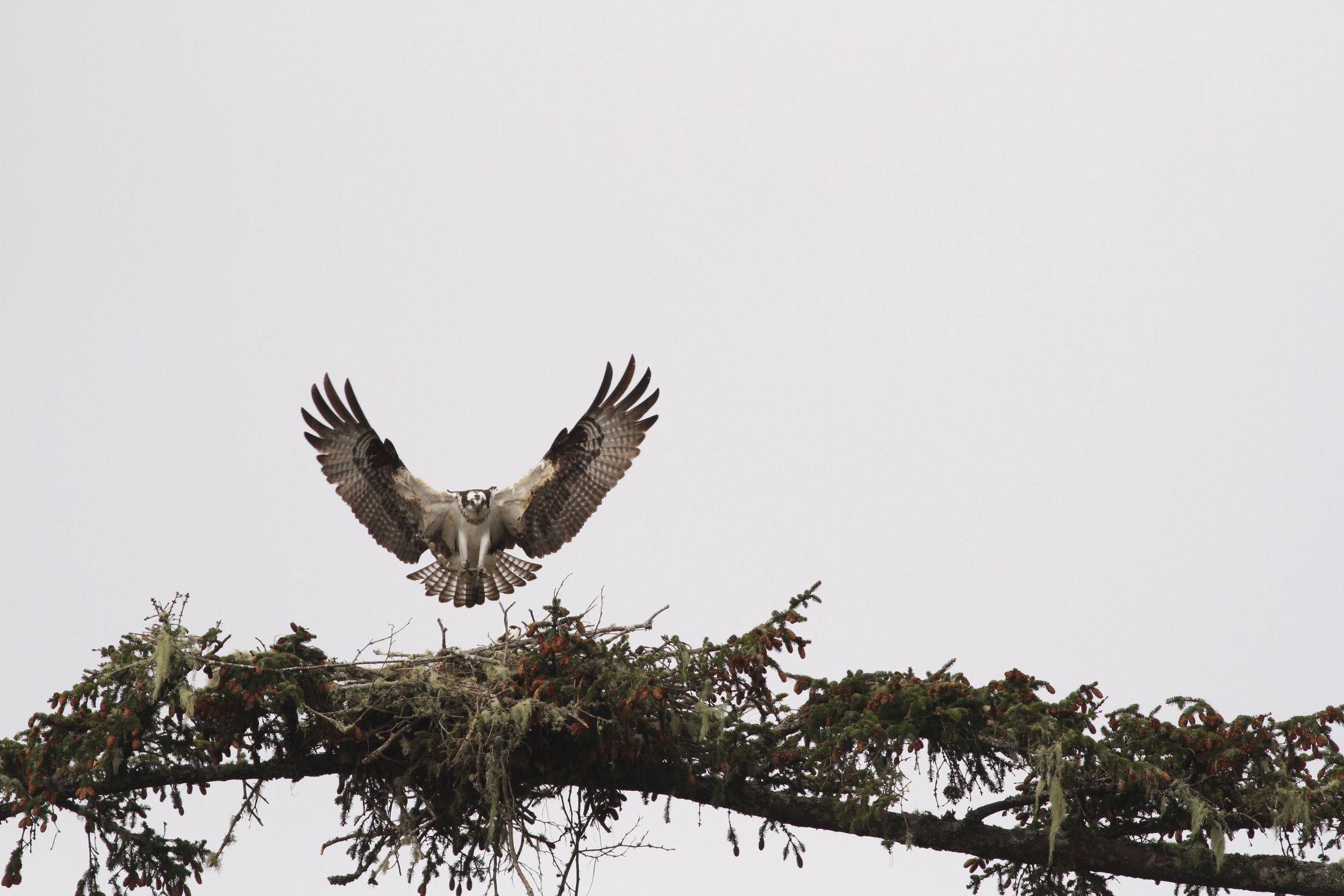Osprey (Pandion haliaetus)
Osprey landing in a tree (photo credit: HRAP Archives)
Description: The osprey are large raptors measuring 54-58 cm tall and weighing 1.4-2.0 kg. They have a white chest, underside, and legs with dark brown wings and stripe up to their yellow eyes. When in flight, the underside of their wings is both brown and white in stripes and patches.
Habitat: Osprey can be found throughout most of North America near open water. They breed throughout Canada and Alaska and down both coastlines. In winter (non-breeding season) they can be found further south. On the west coast that includes southern Oregon to the southern tip of North America. On the east coast they range from North Carolina to the southern tip of North America and in the Caribbean islands.
Nesting: When choosing a nesting location, they are always within 19 km of a water source that has plenty of fish and up high to be protected from ground predators. Males will scout out a good nest site and start collecting material before the female gets there to build the nest. These nests are built upon every year and can end up being 4 m deep and 2 m wide! Females will lay 1-4 eggs and incubate the eggs for 36-42 days. Chicks may hatch on different days, sometimes hatching over the span of 5 days. The males will then bring in fish for the female to feed to the chicks. After 51-54 days, the chicks will start flying.
Diet: Osprey are unique for raptors because of their diet of live fish and diving up to 1 m into the water to catch them. Their talons are built for holding slippery fish: they have a reversible toe to hold prey with two toes in front and two behind, barbed pads on the soles of their feet to help grip the fish, and the know-how to carry their prey head first for less wind resistance.
Tide Pool Tidbits:
The oldest known osprey was at least 25 years old, being banded in 1973 and found in 1998.
Most osprey live between 15 to 20 years.
In 2008, an osprey was tracked flying from Martha’s Vineyard, Massachusetts all the way to French Guiana in South America over a span of just 13 days.
References: The Cornell Lab, Audubon


